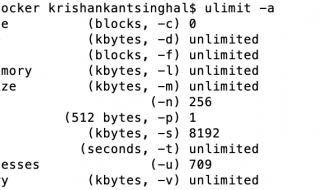with a special splash of Pascal?s Triangle
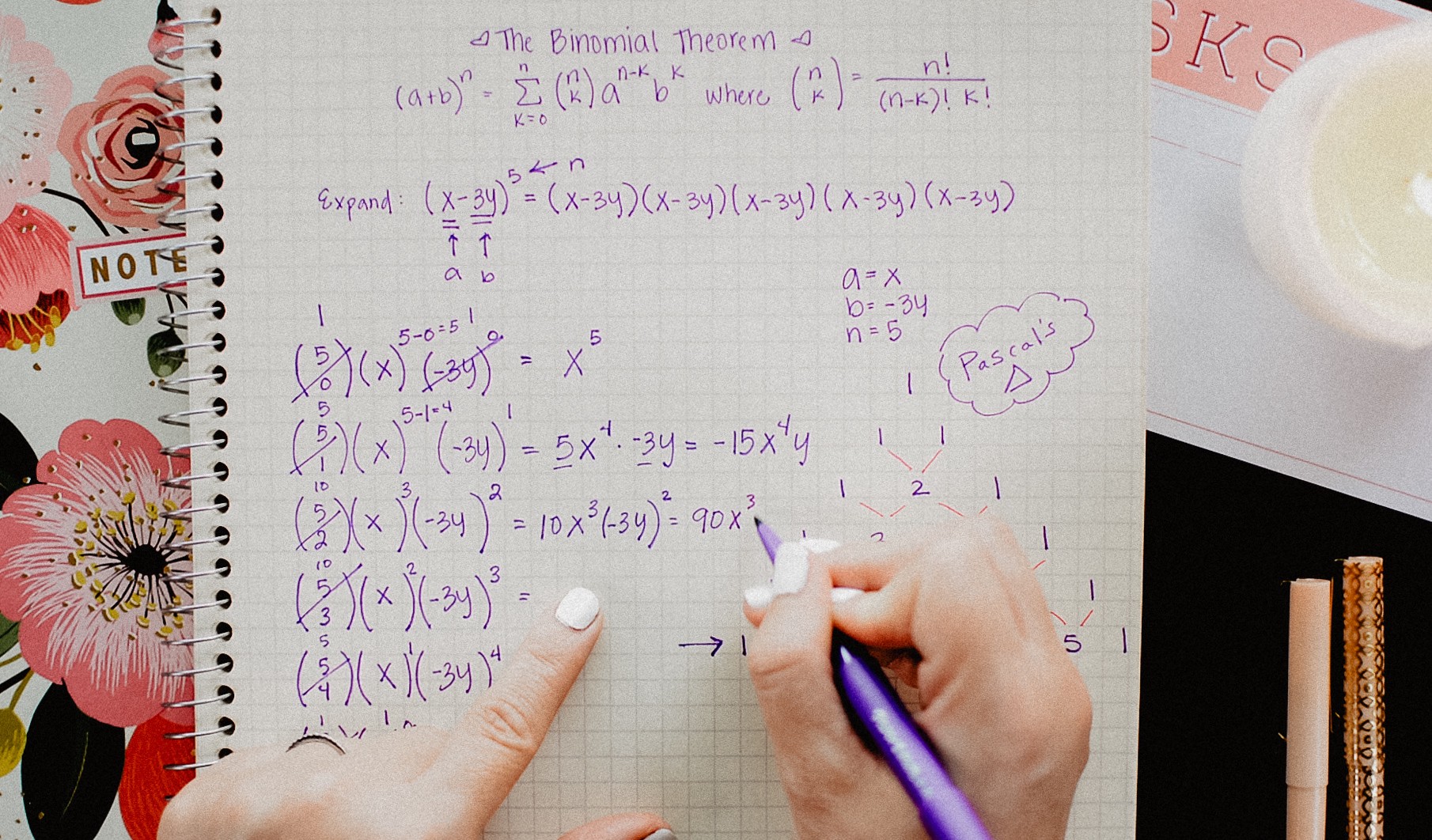 Follow Math Hacks on Instagram
Follow Math Hacks on Instagram
I love, love, love the binomial theorem because it?s so darn clever. It?s essentially a combinatorics approach to solving a horrendously long algebra problem ?? and when you toss in Pascal?s Triangle you get pure math magic.
But? it can be intimidating. Especially when you first encounter it. Just look at the formula. We?ve got summation notation, the combinations formula with factorials, and all sorts of exponents.
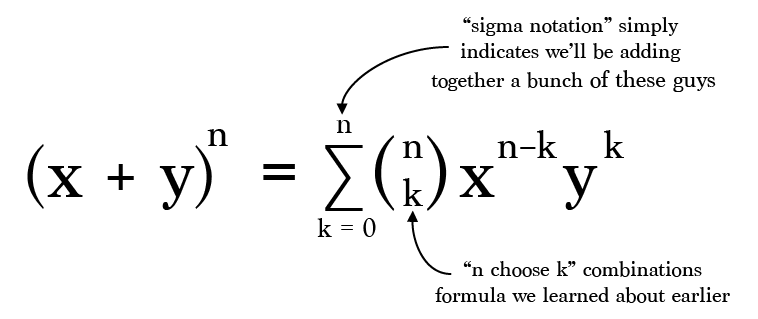 Binomial Theorem
Binomial Theorem
where the ?n choose k? combinations formula is equal to:
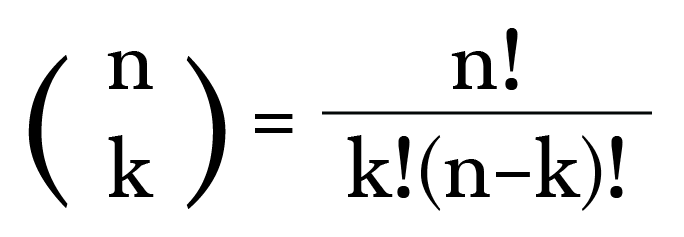 Combinations or ?n choose k? formula
Combinations or ?n choose k? formula
It?s a lot to process when you first see it. But fortunately it?s one of those problems that?s waaaay easier in practice than when you look at the formula. But I will warn you, it?s probably going to leave you with a full page of beautiful math per problem. Which is a bit ironic since this is actually the shorter version than multiplying the binomials out long hand.
So are you ready to do this?
Read the tutorial below, or watch this video for a play-by-play of a tricky binomial expansion.
Click here to subscribe 🙂
The Binomial Theorem In Action
Let?s begin with a straightforward example, say we want to multiply out (2x-3). This wouldn?t be too difficult to do long hand, but let?s use the binomial theorem so that when you encounter larger expansions such as binomials raised to the 4, 5, 6, ? powers you?ll know exactly what to do.
To get started, you need to identify the two terms from your binomial (the x and y positions of our formula above) and the power (n) you are expanding the binomial to.
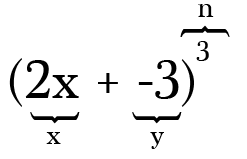
For example, to expand (2x-3), the two terms are 2x and -3 and the power, or n value, is 3. Note that whenever you have a subtraction in your binomial it?s oh so important to remember to include the minus as a negative symbol on the accompanying term.
The wonderful thing about the binomial theorem is it allows us to find the expanded polynomial without multiplying a bunch of binomials together. Pretty neat, right? It turns out that the number of terms in your expanded polynomial will always be one more than the power you?re expanding. That means we?ll be creating a polynomial with 4 terms since the power in this example is 3.
Each term will have a (2x) and (-3) as well as the ?n choose k? formula where n=3. You can go ahead and write that down 4 times, one for each term, leaving the k value in ?n choose k? and the powers blank for the moment.
Next you?ll want to fill in the k-values and powers. Here you can follow the summation formula, increasing the power for each term. But it is pretty easy to just follow the patterns.
The k values in ?n choose k?, will begin with k=0 and increase by 1 in each term. The last term should end with n equal to k, in this case n=3 and k=3.
Next we need to add the powers onto (2x) and (-3).
The power on (2x) will begin with the n-value, so in this case 3, and will decrease by 1 on each term, until you get to zero. The power on (-3) will start with zero and increase by one each time until you get to n, or 3 in this problem.

Because any value raised to the zero power equals 1, you can simplify the terms with powers of zero.

Next go ahead and apply the powers and simplify wherever possible.

The Pascal?s Triangle Shortcut

The last part is to solve the combinations formula. The obvious way to do this is to apply the combinations formula for each problem. But we?re going to take a nice little shortcut here using Pascal?s Triangle.
Pascal?s Triangle is a simple, but powerful triangle formed by creating a triangle with three 1?s to begin. For each row thereafter you simply write 1?s on both ends, and find the middle number(s) by adding the two values from directly above it.
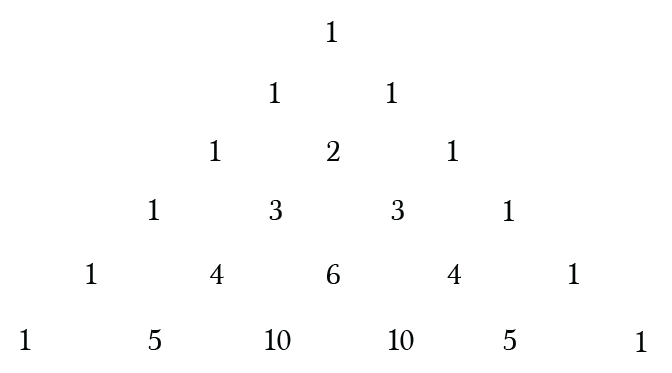 First six rows of Pascal?s Triangle
First six rows of Pascal?s Triangle
Now here?s the good part. Hidden within Pascal?s Triangle are all the answers to any ?n choose k?! It?s like a secret little cheatsheet!
The diagram below shows you where the hidden ?n choose k?s? are located.
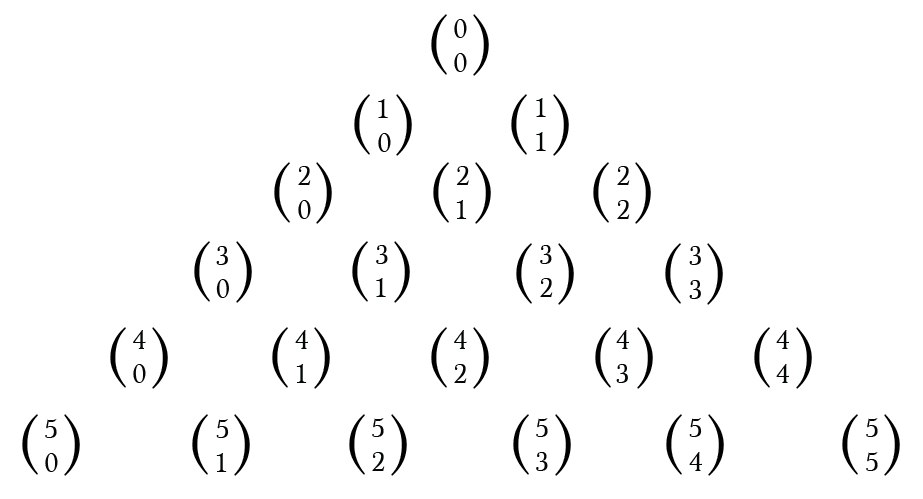
For our problem we need to solve for: 3 choose 0, 3 choose 1, 3 choose 2, and 3 choose 3. Which is all the values in the 4th row. So all we need to do is look to the 4th row of Pascal?s Triangle and match up the answers.
The 4th row has the values: 1, 3, 3, 1. So I?ll just substitute in the answers for our n choose k?s.

Lastly, all you need to do is multiply and simplify each term down to it?s simplest form. Don?t forget to check your final answer to make sure the powers on each term still add to the degree of your original binomial! Trust me, it?s incredibly easy to make a transcription error in this type of problem 😉
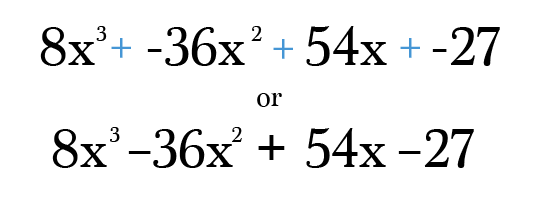 Final answer 🙂
Final answer 🙂
Need another example?
In the video above, I show you how to use the Binomial Theorem to expand the binomial (x – 3y)?. Plus I show you some additional tricks for staying organized and a couple quick checks you can use to easily identify common errors.
Thanks for reading!
? STAY CONNECTED ?
Stay up-to-date with everything Math Hacks is up to!
YouTube | Instagram | Facebook | Twitter


